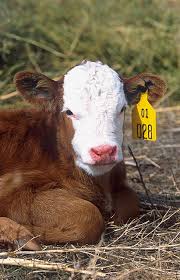Submitted by Emily Herring
Pender County Livestock Agent
Being a Livestock Agent I have heard this question several times, “I’ve got 10 acres of pastures, how many cows can I have?” and I have also heard “I’ve got 3 horses and 1.5 acres of pasture, why can’t I grow any grass?” Do you know the answers to these questions? Both of these questions have to deal with carrying capacity. The answers to these questions could be very simple or complicated; it just depends on a combination of different factors. Carrying capacity is defined as the stocking rate that achieves a targeted level of animal or economic performance over a defined period of time without causing deterioration of the pasture ecosystem. Stocking rate is defined as the number of animals stocked per acre of grazing land in a management unit for a defined period of time and is correlated with carrying capacity. Carrying capacity depends on several factors including- soil productivity, rainfall, and management ability of the landowner. If a producer has pastured land that is very sandy then in general it is safe to say the land is not the most productive soil type available for growing all types of grasses. Sandy soil does not have the capability of holding moisture because of the lack of clay in the soil and the size of the particles of the sand. This is a factor that is out of the producer’s hand, but is a deciding factor when determing pasture grasses to plant and management schemes for your operation. For example a sandy soil would be able to grow a warm season grass like Bermuda or Bahiagrass with proper management and would not be able to grow fescue. Therefore as a manager you could have summer grasses for grazing and would have to feed hay in the winter and/or overseed with ryegrass or a small grain for supplemental grazing. These things should be taken into consideration when deciding stocking rates. How do you know if you are overstocked? One way to tell is if the planted grass in your pastures is not present during the times it is supposed to be actively growing, then there is a good chance you may be overstocked if all other factors are not the problem.
Stocking rate is the number of animals on an acre of grazing land in management for a certain period of time. If Producer A and Producer B both have the same number of acres of Bermuda pastures, with the same number of cows, on the same type of soil and Producer A is able to run more cows per acre than the other with a healthy stand of Bermuda year after year, what other factors do could be in his favor than Producer B? The planning process of establishing pastures in the beginning has a huge impact on carrying capacity. Producer A could be taking soil samples yearly and applying the proper amount of nutrients and lime needed to help his bermudagrass grow more efficiently. He may have also anticipated on having brood cows when establishing pastures whereas Producer B anticipated having goats when establishing his pastures. Producer A could also have his pastures broken up into different fields for the use of rotational grazing with his brood cows and Producer B just allows the cows to graze the same pasture without rotation for the entire season. Properly fertilized/limed, what animals will be on the pasture, what stage of production they are in, and how you manage them on the pastures are all important factors that affect the capability of the pastured land to hold a certain number of animals. For help with determining your carrying capacity and stocking rate for your situation please contact your county Livestock Agent for assistance because there is so many different factors that determine your carrying capacity.




 Seven states have passed such laws to band or limit usage of crates, either through legislation or ballot initiatives. States included are Arizona, California, Florida, Maine, Colorado, Ohio, Michigan, and Oregon. All of the following states are ballot initiative states. North Carolina is not a ballot initiative state and this explains why North Carolina has not been affected yet by these types of laws. I thought this was important to bring to your attention because eventually this may become the situation for North Carolina farmers too. Farmers need to be aware of the animal welfare/rights organizations and what they are doing because 7 out of 50 states already have laws prohibiting any or all of the listed, gestation crates, cages for chickens and stalls for veal calves. The information the farm representative spoke on regarding their farm was great to learn about because of the lack of experience most farmers and myself have with pen gestation housing.
Seven states have passed such laws to band or limit usage of crates, either through legislation or ballot initiatives. States included are Arizona, California, Florida, Maine, Colorado, Ohio, Michigan, and Oregon. All of the following states are ballot initiative states. North Carolina is not a ballot initiative state and this explains why North Carolina has not been affected yet by these types of laws. I thought this was important to bring to your attention because eventually this may become the situation for North Carolina farmers too. Farmers need to be aware of the animal welfare/rights organizations and what they are doing because 7 out of 50 states already have laws prohibiting any or all of the listed, gestation crates, cages for chickens and stalls for veal calves. The information the farm representative spoke on regarding their farm was great to learn about because of the lack of experience most farmers and myself have with pen gestation housing.